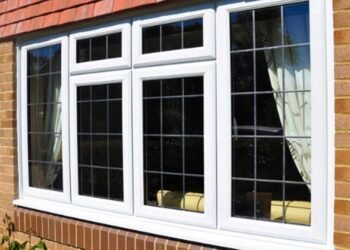Your neighbor recently renovated their home, replacing all their windows with energy-efficient ones. Upon further inquiry (thanks to your nosy self!), you discover they paid a tidy penny for the new windows – not that they’re complaining. In fact, someone else in your area followed the same route. This makes you wonder, “Why are many people jumping on this bandwagon?”
Truth be told, energy-efficient windows are becoming increasingly popular among homeowners. Thus, if you live in Texas, Maverick Windows – window replacement experts in Dallas – could be your next port of call. By partnering with them, you could join the hordes of people switching to such a window option, but I digress.
Back onto the topic at hand – are energy-efficient windows another fancy marketing gimmick, or are they worth the extra money? Well, these windows can deliver on the promise. Let’s discuss the potential upsides of investing in them.
1. Lower Energy Costs
Do you feel like your house is a tad too drafty for your liking? And do your monthly energy bills leave you mumbling expletives – because it’s almost like a second mortgage?
Well, energy-efficient windows can help reduce your energy costs. They’re designed to keep heat inside during the winter and hot air out in the summer. Besides, given that we allocate, on average, up to 40% of their budget to heating and cooling our homes, it makes sense to consider ways to decrease such expenses. .
A vital variable to consider when selecting efficient windows is the U-factor. This measurement informs you how well the window insulates against heat loss (or non-solar heat transfer through your window), with lower numbers indicating better insulation. I know what you’re thinking, “how do they work their magic?”
Basically, they sport a unique coating that reflects heat away from the windowpane – thus reducing the energy required to maintain a comfortable temperature in your home. Plus, they incorporate advanced technology and a window spacer system that minimize heat loss. The result? A smile every month as you check your energy bill.
2. Combating Condensation
Conventional windows are more likely to trap moisture, which in turn leads to condensation. In rooms that typically have high-humidity levels, moisture can cause window discoloration and lead to mold growth.
The icky odor and potential damage can leave you questioning the choice to stick to ordinary windows. What’s more, condensed water droplets can drip onto your wall and flooring – potentially leading to structural damage.
On the flip side, energy-efficient windows reduce condensation by trapping less moisture – thanks to their insulated frames and special coating. Plus, their insulating properties also help prevent temperature fluctuations and the resultant moisture.
That said, humidity is still a factor to consider, as it’s nearly impossible to avoid. Thus, it’s advisable to invest in dehumidifiers or fans to help promote air circulation and reduce condensation.
3. Higher Resale Value
If you’re shopping for a home, would you prefer one with conventional or energy-efficient windows? Chances are you’ll choose the latter. And if you intend to put your home on the real estate market, energy-efficient windows could help you fetch a higher price. Sure, the upfront cost might seem hefty, but the long-term benefits could be well worth your investment – especially if you plan to profit when selling.
But even if you plan to remain in your current home for the foreseeable future, the savings you’ll accrue could more than make up for the initial investment. Plus, a firm like Maverick Windows offers a lifetime warranty on energy-efficient windows, implying you don’t have to fret about the functionality of your windows.
4. Comfortable Living Environment
For homeowners with old windows, the cold season is a time to break out their grandma blankets and other winter gear to stay toasty. For some, it means turning the thermostat way up – resulting in huge energy bills.
Plus, as your heating unit puts in overtime to maintain your desired temperature, it’s more prone to wear and tear and can easily break down. If this happens when the frigid winter months roll around, you might be in a sticky (and chilly) situation.
Energy-efficient windows let you bid goodbye to frostbite as they help regulate indoor temperatures. That way, even your HVAC system has an easy time, and everyone in the house can relax in a cozy environment.
Investing in energy-efficient windows is like money in the bank – it pays off for years to come. And as these benefits point out, such windows are worth the hype. Perhaps, now’s the right time to spring into action and upgrade your dated windows to more efficient units so you can reap the rewards.












